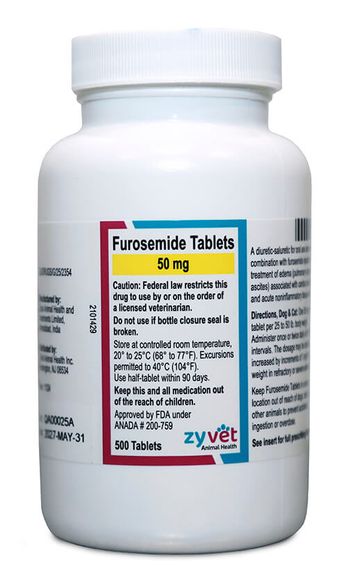
Back to basics: clinical cardiovascular exam and diagnostic testing (Proceedings)
Although there are highly sophisticated and advanced diagnostic modalities in cardiology, the basic technique of a good cardiovascular examination is still an essential fundamental element of the cardiovascular workup. Other basic diagnostic modalities that are readily available in most practices include thoracic radiographs, electrocardiography, and blood pressure measurement.
Although there are highly sophisticated and advanced diagnostic modalities in cardiology, the basic technique of a good cardiovascular examination is still an essential fundamental element of the cardiovascular workup. Other basic diagnostic modalities that are readily available in most practices include thoracic radiographs, electrocardiography, and blood pressure measurement.
The initial assessment of the patient begins with the signalment and history. In pediatric or juvenile patients, signalment helps increase suspicion for certain congenital defects. Rottweiler, Golden Retriever, Great Dane, Boxer, and German Shepherd dogs are particularly predisposed to develop subaortic stenosis. In contrast, terriers and small breed dogs are more likely to develop pulmonic stenosis. Tricuspid valve dysplasia +/- mitral valve dysplasia are the most common defects of Labrador Retrievers, which cannot be excluded based on the absence of a murmur on physical examination. Small breed dogs such as the poodle, Yorkshire terrier, Shetland sheep dog, and many others typically develop patent ductus arteriosus. Developmental heart diseases are more common in middle age to older animals, and include myxomatous mitral valve disease in small dogs (especially the Cavalier King Charles Spaniel),dilated cardiomyopathy in large breed dogs, and hypertrophic cardiomyopathy in cats. Highly predilected breeds for development of DCM include Boxer dogs, Doberman Pinschers, and giant breed dogs.
Objectives for cardiac auscultation include assessment for a murmur, extra heart sound (gallop or systolic click), or arrhythmia. The murmur is localized to left or right side, basilar versus apical point of maximal intensity, with the timing defined as systolic (90% of murmurs), diastolic, continuous, or to-and-fro. Certain murmur characteristics are pathognomic for specific diseases, such as a continuous left basilar murmur heard in patients with a patent ductus arteriosus. Murmurs in cats may be present due to underlying heart disease, systemic diseases causing volume overload to the heart or high output state (significant anemia, fluid overload, hyperthyroidism, fever), or may be innocent. Most innocent murmurs are relatively soft, whereas loud murmurs are most common in hypertrophic obstructive cardiomyopathy or congenital heart defects. The typical murmur of mitral regurgitation is a left apical holosystolic or pansystolic murmur. Pansystolic murmurs obscure the second heart sound, and are usually present in the face of severe mitral regurgitation. The murmur intensity roughly parallels the degree of mitral regurgitation, with soft murmurs (I-II) correlated with mild mitral regurgitation, and loud murmurs (≥ IV) correlated with severe mitral regurgitation. The typical auscultation abnormalities in dilated cardiomyopathy include a soft left apical holosystolic murmur and a S3 gallop.
Extra heart sounds include either a gallop heart sound, a systolic click, or split heart sounds, and sometimes can be difficult to differentiate, especially in the presence of tachycardia. A gallop heart sound is an extra heart sound, either S3 or S4, and occurs in diseases causing a stiff left ventricle (in cats mostly) or significant volume overload to the heart (cats: anemia, hyperthyroidism, fluid overload; dogs: severe AV insufficiency, dilated cardiomyopathy). A mid-systolic click is a classic feature of mitral valve prolapse and myxomatous valve degeneration, and is often heard when the mitral regurgitation is mild.
Arrhythmias may consist of premature beats, runs of tachycardia, irregularly irregularly rhythm, or bradycardia. Auscultation alone cannot diagnose the type of premature beat (ventricular versus atrial premature complex), and an electrocardiogram must be done to diagnose the specific rhythm abnormality. An irregularly irregular rhythm may be caused by atrial fibrillation or frequent atrial or ventricular premature complexes, and must be distinguished by an ECG.
Assessment of femoral arterial pulse intensity and whether pulses are synchronous with the heart beat are also essential objectives in the cardiac examination. Femoral pulses reflect the pulse pressure which is the difference between the systolic and the diastolic arterial blood pressure. Decreased femoral arterial pulse strength may be present in dogs with significant left ventricular outflow tract obstruction such as subaortic stenosis, or in dogs with very low cardiac output (most commonly due to dilated cardiomyopathy or cardiac tamponade). Bounding femoral arterial pulses are present in diseases with increased pulse pressure such as patent ductus arteriosus or aortic insufficiency, which cause a diastolic runoff of blood from the aorta to the pulmonary artery or left ventricle respectively. Jugular venous distension or pulsation may reflect elevated right heart diastolic pressure in dogs with right heart failure. Concurrent abnormalities typically include hepatomegaly and abdominal effusion.
Evaluation of respiratory abnormalities is initially done by observation of the animal's breathing pattern in the examination room prior to handling the animal. Abnormal respiratory patterns include tachypnea, dyspnea, orthopnea, or cough. Cough is not specific for heart failure, and is often present in dogs with respiratory disease including collapsing trachea or chronic bronchitis. Dogs with heart failure may cough due to pulmonary edema or compression of the left mainstem bronchial compression by an enlarged left atrium. A cardiac cough is typically soft, compared to the loud honking cough caused by collapsing trachea, or the loud, productive hacking cough typical of chronic bronchitis. Animals with heart failure may have increased adventitious lung sounds, although harsh crackles are more common in animals with primary respiratory disease. Muffled lung sounds are common in animals with pleural effusion, and are typically coupled with a restrictive breathing pattern (fast, shallow breaths). Absence of adventitious lung sounds does not eliminate congestive heart failure, as many animals with mild cardiogenic pulmonary edema do not have increased lung sounds.
Diagnostic modalities and techniques
Electrocardiogram
The primary indication for obtaining an electrocardiogram (ECG) is to evaluate an arrhythmia. Patients with a history of syncope, episodic weakness, or collapse should be evaluated with an ECG. An ECG is an insensitive test for assessment of specific cardiac chamber enlargement, and interpretation of structural heart disease is best done using radiography and echocardiography. In order to simplify and standardize the process of ECG analysis, the interpreter should evaluate ECG's in a specified order, which aids in interpretation of difficult arrhythmias. The first step is to calculate the heart rate, either an average or an instantaneous rate. Average heart rate is the number of beats in 6 seconds x 10, or the number of beats in 3 seconds x 20. The instantaneous rate obtained by measuring the R-R interval (in seconds) of the particular beat (preceeding beat is the first R to the beat of interest R), and dividing it into 60 s.
The second step of ECG analysis is to assess whether the rhythm is regular or irregular, and if there is a pattern of the irregularity. Next, and most importantly, the rhythm is classified as either supraventricular or ventricular in origin. Supraventricular rhythms typically have narrow, upright QRS complexes in lead I, II, AVF, III, unless there is a bundle branch block. Ventricular arrhythmias have wide, tall or deep (negative) S waves, and have wide and bizarre T waves, and are not associated with a P wave. Assessment of the relationship of P waves to the QRS complexes is critical for determining many supraventricular and ventricular arrhythmias. At 50 mm/s and typically standard amplitude of 10 mm/mv, complex morphology (height and width of complexes, PR interval) should be measured. Lastly, the mean electrical axis is calculated, which can indicate whether there is a marked left or right axis deviation (normal MEA is 40-100 in dogs, 0-160 in cats). Right axis deviation is seen with right ventricular hypertrophy (normal QRS duration) or right bundle branch block (prolonged QRS duration).
Thoracic radiographs
Thoracic radiographs are an essential tool for assessment of overall heart size, assessment of the great vessels (aorta, pulmonary artery and main branches, caudal vena cava), pulmonary parenchyma, pulmonary vasculature, and airways. Thoracic radiographs are an essential tool to diagnose congestive heart failure. Presence of left atrial dilation and cardiomegaly, as well as perihilar to caudodorsal interstitial to alveolar pulmonary infiltrates, with or without pulmonary vascular distension is pathognomic for left heart failure in dogs. Thoracic radiographic abnormalities of left heart failure in cats is much more variable, but classic abnormalities include cardiomegaly and left atrial dilation, pulmonary venous distension, diffuse interstitial to alveolar pulmonary infiltrates or pleural effusion.
Vertebral heart score may be useful to quantify heart size. The length of the long axis of the heart is measured from the level of the carina to the left ventricular apex. A perpendicular line is drawn at the widest part of the short axis of the heart. The long axis and short axis lengths are then converted to the length of vertebrae, starting at the cranial aspect of T4, and then added together for total vertebral heart scale. Normal VHS in cats is 6.9- 8.1, and normal VHS in dogs is 9.7 +/- 0.5 (99% confidence interval 8.5-11).1 VHS of 10.7 vertebrae or larger accurately (78% accuracy) discriminates dogs with cardiomegaly and heart disease from normal dogs.2 Assessment of left atrial dilation in dogs indicates significant left heart disease and increased left ventricular diastolic filling pressure, and is always present in animals with left heart failure.
Great vessels: Dilation of the ascending aorta may be seen in animals with subaortic stenosis, patent ductus arteriosus (i.e. the ductal bump), or as a normal variant in aged cats. Using the dorsoventral or ventrodorsal view, the aorta is located at the 12-1 o'clock position. The main pulmonary artery lies just to the left of the aorta on the "clock face", and may be dilated in animals with pulmonic stenosis, pulmonary hypertension, or heartworm disease. Measurement of an increased caudal vena caval to aortic diameter of >1.5 is highly suggestive of right heart failure in dogs, and is always accompanied with evidence of right heart enlargement (reverse D appearance of the heart on dorsoventral view, increased sternal contact on lateral view).
Pulmonary vasculature: Pulmonary venous distension (i.e. venous congestion) is a common abnormality in animals with left sided heart failure. However, absence of pulmonary venous congestion does not eliminate heart failure from the differential list. Pulmonary overcirculation pattern is identified when the pulmonary arteries and pulmonary veins are both dilated, and occurs in left to right shunting congenital heart defects such as patent ductus arteriosus. Pulmonary undercirculation (small pulmonary arteries and veins) occurs in animals with hypovolemia or right to left shunting congenital heart disease.
Pleural effusion is a common manifestation of left or right heart failure in cats, or right heart failure in dogs. Most cats and dogs with right heart failure also have concurrent ascites. Repeat thoracic radiographs should be done after thoracocentesis to allow better visualization of the heart and pulmonary vasculature.
Abnormal pulmonary patterns include pulmonary infiltrates (interstitial or alveolar), bronchial pattern, or nodular pattern. It is essential to assess whether infiltrates are cardiogenic (left heart failure) or non-cardiogenic (infectious, parasitic, inflammatory, neoplastic, or non-cardiogenic (neurogenic) pulmonary edema. In dogs, the pattern of the infiltrate is helpful, as congestive heart failure causes perihilar to caudodorsal pulmonary edema. Left atrial dilation and cardiomegaly should be present in left heart failure. In cats, there is no typical distribution pattern of cardiogenic pulmonary edema, and cardiac size may be obscured. These patients often benefit from an echocardiogram to assess for significant cardiomegaly and atrial dilation. A nodular pulmonary pattern may be seen in neoplastic or fungal pulmonary disease.
Blood pressure
Measurement of blood pressure is an often overlooked diagnostic tool in veterinary medicine. Systemic hypertension is an under-recognized disease that may cause significant end organ damage to the brain, retina, kidney, and heart. Differentiation of stress-related elevation in blood pressure (i.e. white coat hypertension) from true systemic hypertension can also be challenging in animals. Blood pressure should be measured in any animal with heart disease, and is an important part of the minimum data base in aged animals (especially cats). In animals with severe cardiac disease and heart failure, systemic hypertension may aggravate the severity of the heart failure.
Measurement of blood pressure should be done with as minimal stress and restraint as possible, prior to other stressful procedures. Animals should be allowed to acclimate to the room for 5-10 minutes prior to BP measurement, and the owner is preferably present to calm the animal. The Doppler ultrasonography method of blood pressure measurement is the preferred in cats and small dogs, since oscillometric methods may underestimate blood pressure in very small animals. In cats, an extremity or the tail can be used, whereas in dogs the metacarpal or metatarsal artery is used. The cuff size should be 30-40% of the limb or tail circumference. The first measurement should be discarded, and five consecutive measurements (with < 20% variability) are averaged. Normal systolic blood pressure is less than 150 mmHg, equivocal to mildly elevated at 151-160 mmHg, and mildly elevated at 160-180 mmHg.1 In animals with elevated blood pressure, repeated measurement 30 minutes to several hours later, or on another day, is advised.
Blood pressure should be measured in all cats with echocardiographic evidence of left ventricular concentric hypertrophy, since systemic hypertension can lead to a reversible secondary concentric hypertrophy. Blood pressure should also be measured in all animals with significant heart disease or heart failure. Avoidance of systemic hypertension is important in management of left heart failure. Increased afterload worsens the severity of mitral regurgitation and hastens pulmonary edema formation. In these patients, ideal systolic blood pressure is less than <140 mmHg. Treatment of systemic hypertension, or afterload reduction in dogs with severe mitral regurgitation and refractory heart failure, includes the use of a selective arteriolar vasodilator. Amlodipine is the treatment of choice of most causes of systemic hypertension except for pheochromocytoma (which is treated with the alpha blocker Prazosin).
Systemic hypotension occurs in low output heart failure, and may require hospitalization and critical care with positive inotropes (dobutamine, pimobendan). Echocardiography is needed to identify the etiology of the heart disease, and may help tailor appropriate medical therapy. Please refer to the Approach to the collapsing dog section of the notes.
References
Brown S, Atkins C, Bagley R, Carr A, Cowgill L, Davidson M et al. Guidelines for the identification, evaluation, and management of systemic hypertension in dogs and cats. J Vet Intern Med.2007.May.-Jun.;21(3):542.-58. 2007;21:542-58.
Newsletter
From exam room tips to practice management insights, get trusted veterinary news delivered straight to your inbox—subscribe to dvm360.






